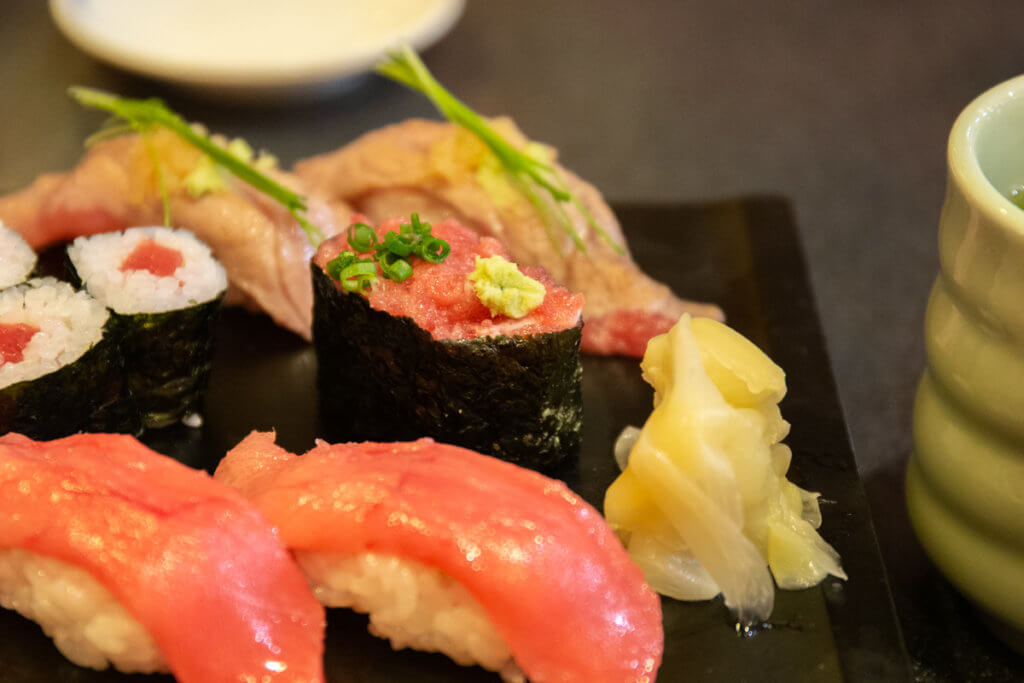The Ultimate Guide to Mastering Morimoto Sushi Rice Recipe at Home
Written By James Morgan
Unlocking the secrets of a perfect Morimoto sushi rice recipe can transform your homemade sushi into an exquisite dining experience. Whether you're a amateur home cook, BBQ enthusiast, or someone keen on Japanese cuisine, crafting sushi rice with precision can elevate your sushi game to restaurant-quality levels.

Introduction to the Art of Sushi Rice
Creating the perfect sushi rice is an art that centers on precision, quality ingredients, and a harmonious balance of flavors, textures, and appearances. The Morimoto sushi rice recipe is lauded across the globe for its authenticity and extraordinary taste. With its unique blend of vinegar, sugar, and salt, this recipe brings out the subtle umami flavors that pair so immaculately with fresh seafood and vegetables.
But why stop there? We want to fill your kitchen with the spirit of sushi-making excellence. Today, were transforming your kitchen into a sushi sanctuary, teaching you all there is to know about crafting the ideal sushi rice. Before jumping into the intricate details, its beneficial to understand the foundations, the history, and the cultural significance behind sushi rice.
Historical Significance of Sushi Rice
Sushi originated in Japan as a preservation method for fish using fermented rice. Over centuries, it evolved into the beloved delicacy we know today. The rice used in sushi, known as shari or sumeshi, underwent a transformation, moving away from fermentation to a more palatable seasoned rice.
Understanding its historical significance helps in appreciating the painstaking process of making the perfect Morimoto sushi rice recipe. The precise balancing of vinegar, sugar, and salt, combined with the ideal cooking method, offers a fleeting yet profound connection to sushi's rich culinary heritage.

Ingredients for the Perfect Sushi Rice
- 2 cups of Sushi rice (short grain)
- 2 cups of water
- cup of rice vinegar
- cup of sugar
- 1 tablespoon of Kosher salt

Essential Cookware and Tools
A journey to mastering the Morimoto sushi rice recipe requires the right tools:

Step-By-Step Process: Crafting the Perfect Morimoto Sushi Rice
Step 1: Rinse the Rice
Rinsing is a crucial step in preparing the perfect sushi rice. Start by placing the short-grain sushi rice into a strainer and thoroughly rinse it under cold water. This process helps to remove excess starch, ensuring the rice doesnt turn gummy during cooking. Continue to rinse until the water runs clear, which should take about 3-5 minutes. Remember, the excellence of the Morimoto sushi rice recipe hinges on meticulously prepared rice grains.
Step 2: Soak the Rice
After rinsing, it is time to soak the rice. Place the rinsed rice into a bowl and cover it with water. Allow it to soak for about 30 minutes. This step is essential as it helps the rice grains absorb water evenly, leading to a more consistent texture. Soaking ensures the rice will cook uniformly, an important factor when crafting Morimoto sushi rice recipe.
Step 3: Cook the Rice
Now, transfer the soaked rice to a rice cooker and add 2 cups of fresh water. Cook the rice according to the manufacturers instructions. Using a rice cooker simplifies the process and ensures that the rice is cooked to perfection, maintaining the delicate balance of moisture and texture critical for sushi rice.
Step 4: Prepare the Vinegar Mixture
While the rice is cooking, combine the rice vinegar, sugar, and Kosher salt in a saucepan. Heat the mixture over medium heat, stirring until the sugar and salt have completely dissolved. Do not bring the mixture to a boil. Once the ingredients are well-combined, set the saucepan aside to cool. This seasoning mix is what grants the Morimoto sushi rice recipe its signature taste, balancing the acidity of the vinegar with the sweetness of sugar and the subtle enhancement of salt.
Step 5: Season the Sushi Rice
Once the rice has cooked, transfer it to a wooden or non-metallic bowl. Using a wooden paddle, slowly start to fold the vinegar mixture into the rice. Be cautious not to mash or crush the rice grains - the goal is to coat them evenly with the vinegar mixture without breaking them apart. Properly seasoned rice should appear glossy and should slightly stick together, but not be mushy or overly wet.
Step 6: Cool the Rice
Finally, allow the rice to cool to room temperature. Using a hand fan or placing the rice in front of a cool breeze can expedite this process and add a slight shine to the rice grains. This step is vital in achieving the desired texture for sushi, ensuring the rice holds together well when making sushi rolls or nigiri.
Tips and Tricks for the Perfect Morimoto Sushi Rice
- Using a sharp sushi knife and a cutting board will help you cut ingredients precisely, maintaining the integrity of the rice and fillings.
- Investing in a sushi making kit can simplify the rolling process, ensuring your sushi rolls are tight and uniform.
- Consistency is key; always use the same rice-to-water ratio and follow the same preparation steps to achieve consistent results every time.
FAQs about Morimoto Sushi Rice Recipe
Question 1: Can I use any type of rice for this recipe?
While it's technically possible to use other types of rice, authentic sushi rice calls for short-grain sushi rice. This variety has the proper starch content needed to achieve the stickiness that's essential for making sushi rolls and nigiri. Utilizing the wrong type of rice will result in a vastly different texture and overall experience, detracting from the authenticity of your Morimoto sushi rice recipe.
Question 2: Why is it important to cool the rice to room temperature?
Cooling the rice to room temperature before using it in sushi is critical. Warm rice becomes challenging to handle, often resulting in a sticky mess rather than neatly formed sushi. Room temperature rice also fuses better with other sushi ingredients, ensuring each bite is harmonious in flavor and texture.
Question 3: How do I store leftover sushi rice?
Sushi rice is best enjoyed fresh. However, if you must store it, place the rice in an airtight container and refrigerate. When you're ready to use it again, gently reheat it in a microwave or steam it with a damp cloth. Note that the texture may change slightly, but proper reheating can bring it back close to its original state.
Conclusion
Mastering the Morimoto sushi rice recipe is a rewarding endeavor that promises restaurant-quality sushi from the comfort of your kitchen. With precise techniques, high-quality ingredients, and the right tools, your homemade sushi can transcend ordinary home cooking, offering a truly exceptional dining experience. Take your time to practice, and soon you'll be dazzling your friends and family with your sushi-making prowess.
For further reading, check out this (guide on how to make sushi at home)[https://www.gimmesomeoven.com/how-to-make-sushi-at-home/].
Don't forget to check out essential cookware cleaners to maintain your tools' longevity and hygiene:
As an Amazon Associate, I earn from qualifying purchases.



